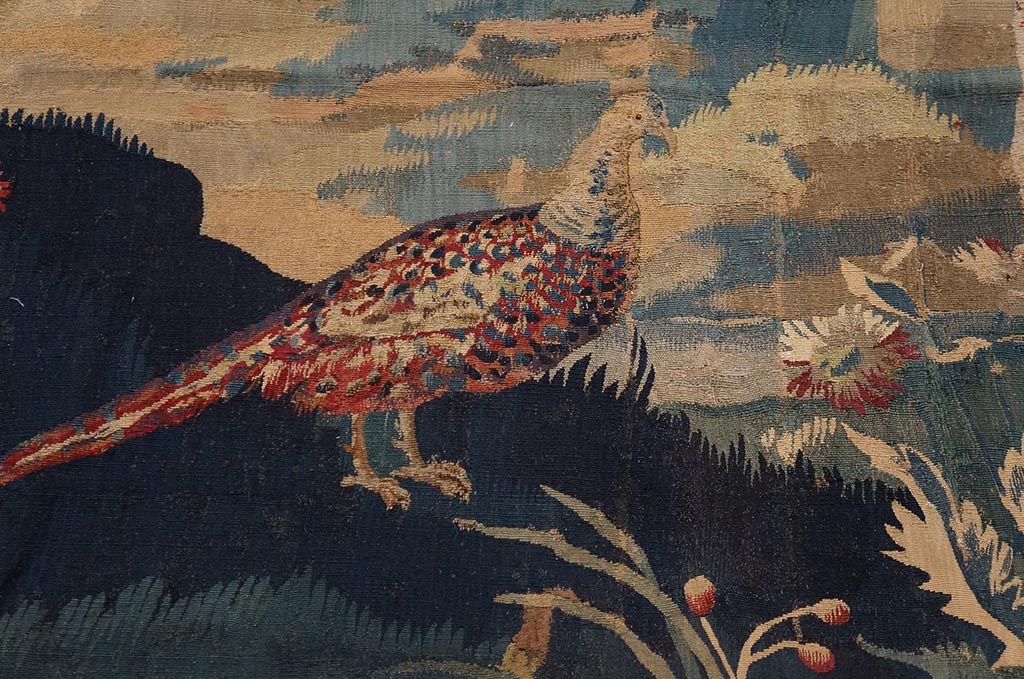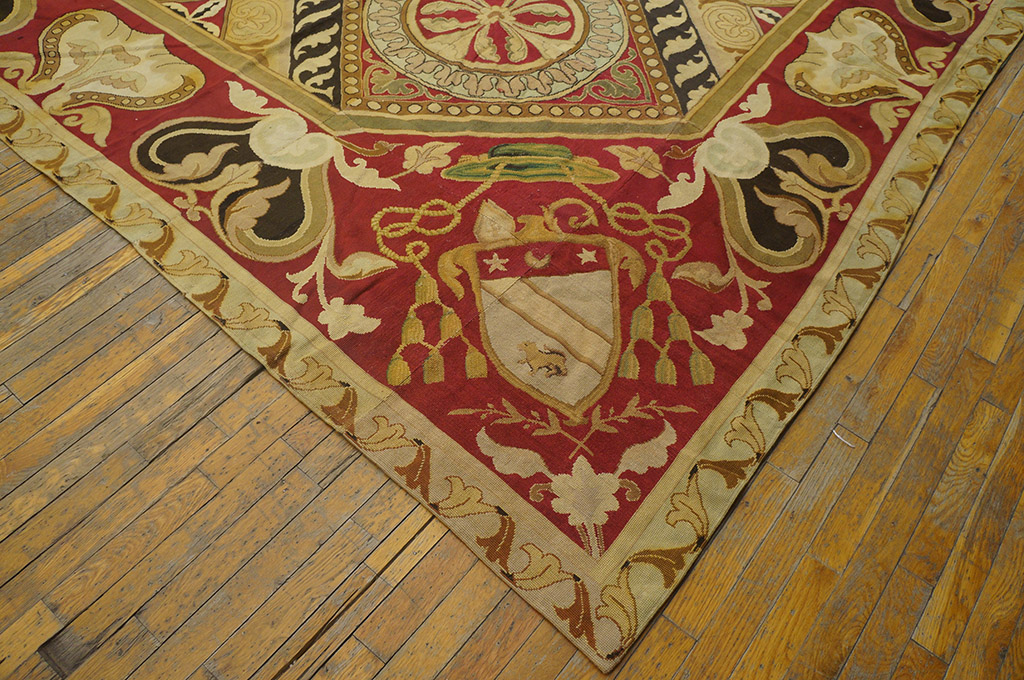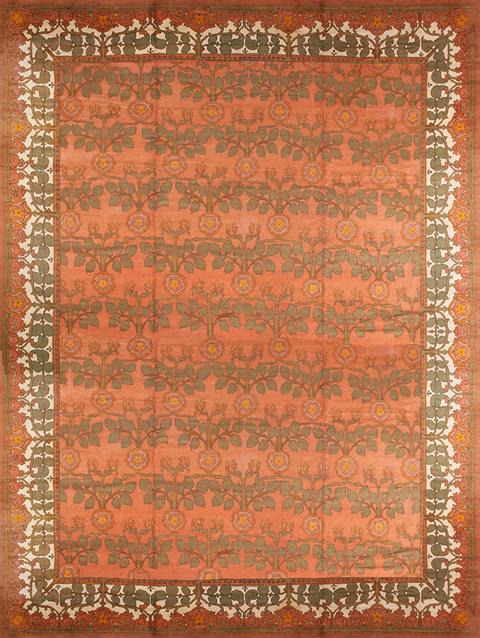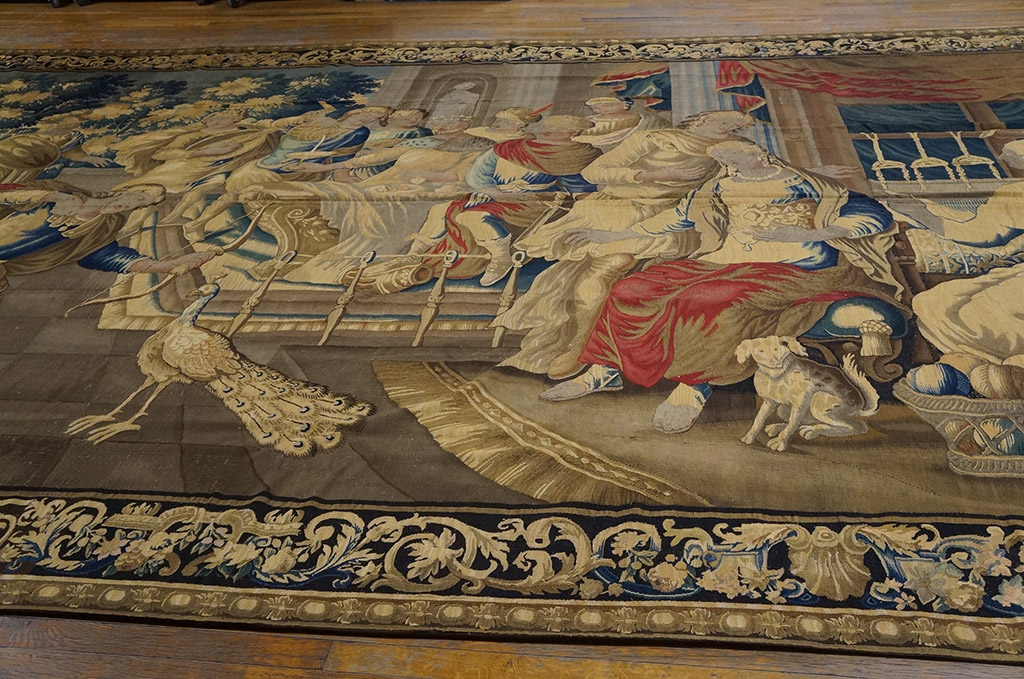#20419
Northwest Persian Gallery Carpet
Probably Kurdistan, Possibly Kolyai
6’4” x 15’8”
3rd quarter 18th Century
This antique gallery format carpet is a particularly fine example of a select group of Kurdish carpets accurately interpreting a 17th century Mughal Indian Agra prototype.
The abrashed and slightly corroded brown field displays a complex, dense allover one-way pattern of three blossom flowers, small palmettes and geometric rosettes connected by fractional split arabesques and broken vertical staves.
Although the pattern seems to be textile-derived, in fact there are surviving Indian pile carpets with a virtually identical pattern. Most salient are the split arabesques in ivory, yellow, red, and royal blue which delineate a quasi-lattice pattern. The field is densely covered and there are no open areas. The pattern is balanced in all directions, a sign of a skilled workshop.
The main navy border displays two types of palmettes, rosettes, and embracing pairs of lancet leaves, with matching ivory minor stripes of repeating, discrete squares of trefoiled double flowers. These flowers appear exactly on contemporary Kirshehir Turkish rugs and later in the 19th century on Luri tribal rugs.








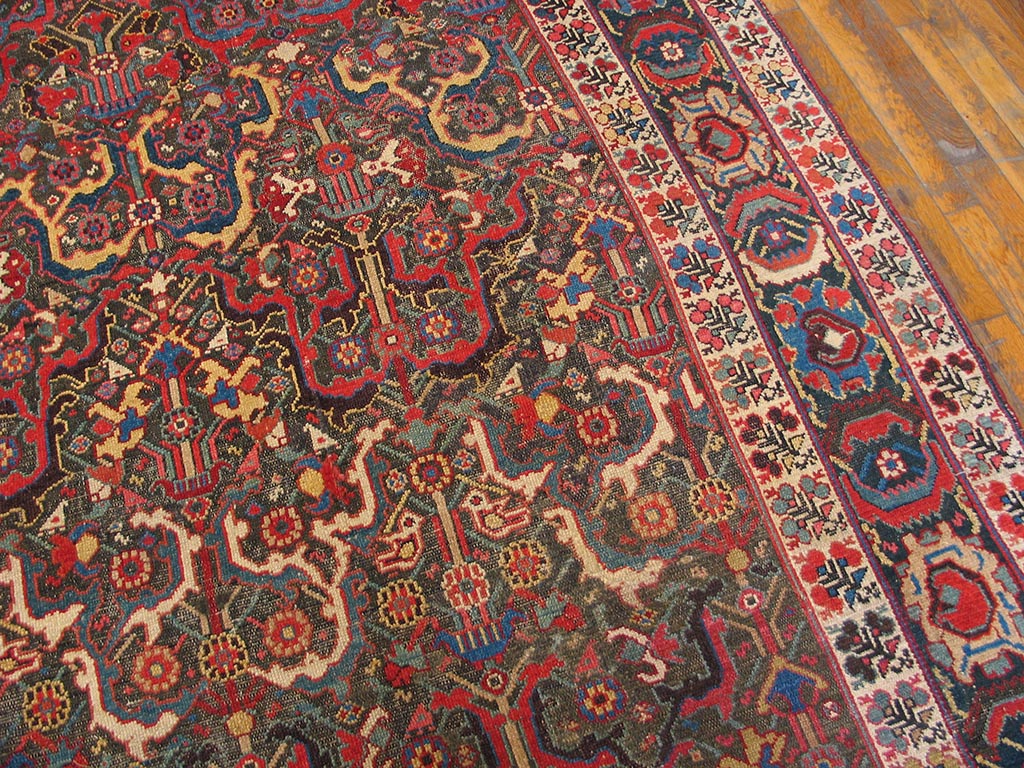

The weave employs symmetric (Turkish) knots on a mixed foundation of cotton warps and single wool wefts between knot rows. This structure is common in Kolyai Kurdish carpets of the period. The kelleh format is also a Kolyai specialty. A small number of these carpets are known, often with burgundy fields. Ours is unusual for its brown ground. All share the same design. How a classic Indian carpet got to Kurdistan to copy is one of the many unsolved rug mysteries. Add in the Turkish style minor borders and one has a doubly curious, but highly attractive and totally authentic carpet. A few pieces in related patterns have been assigned to Malayer to the east on the basis of weave character, but they are of the same age. A date for our piece at the 3rd quarter of the 18th century is quite acceptable.
To view this rug on our website, click here.









